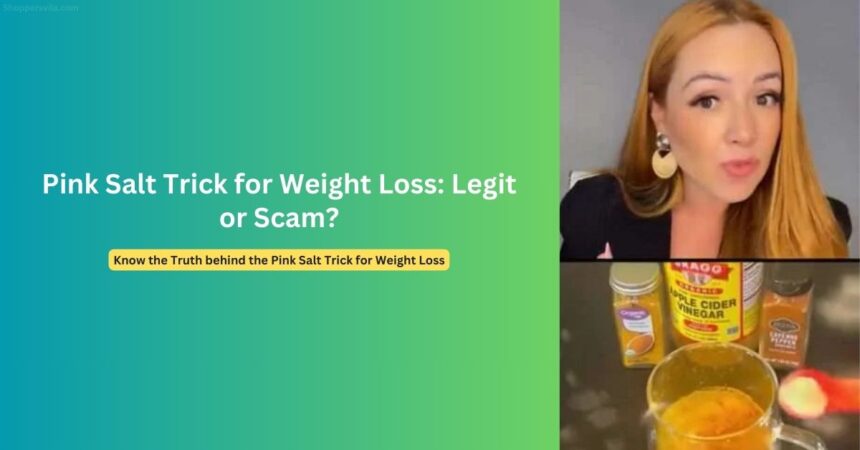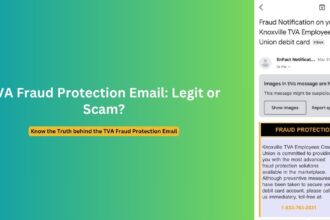The promise of quick and effortless weight loss has long attracted millions of people searching for an easy solution. Recently, a so-called “Pink Salt Trick” has been making waves across social media platforms, promising astonishing results—sometimes as much as 60 to 90 pounds lost—with little more than a daily drink made from common household ingredients. Promoters of the trick claim that no diet or exercise is required, and that the secret drink works like magic.
But can a simple mix of pink Himalayan salt and other pantry items truly lead to rapid, dramatic weight loss? Or is this just the latest scam designed to exploit the hopes and wallets of unsuspecting consumers? In this article, we break down the facts behind the viral claims, examine the science (or lack thereof), and show you how to protect yourself from being misled.
Overview of The Pink Salt Trick Weight Loss Craze
Over the past year, social media platforms have seen a surge in viral ads promoting what is being dubbed the “Pink Salt Trick” for effortless weight loss. These attention-grabbing videos often feature overly enthusiastic narrators, before-and-after transformations, and claims of losing 30, 60, or even 90 pounds by simply drinking a mix of Himalayan pink salt and other household ingredients. The message is simple but seductive: you don’t need to diet or exercise—just drink this miracle concoction and the pounds will melt away.
But is there any truth to these viral claims? Or is this just the latest in a long line of weight loss scams? Let’s examine the origins of the “Pink Salt Trick,” how the scam operates, and what the science really says.
How the Pink Salt Trick Scam Works
At first glance, the Pink Salt Trick may seem like a harmless home remedy. But a deeper dive reveals a sophisticated scam designed to mislead and extract money from vulnerable individuals. Here’s a step-by-step breakdown of how this common online scam typically operates:
- Fake Viral Videos: These ads often use AI-generated voices and actors, along with stock footage and manipulated images. They present emotional, fabricated testimonials of people who allegedly experienced life-changing weight loss using the pink salt drink.
- Fabricated Media Mentions: The ads commonly claim the drink has been “featured” on major media outlets like CNN, Fox News, or the New York Times. No legitimate news organization has published any such story.
- Urgency Tactics: Claims that the video will be taken down soon, or that the government is about to ban the drink, are made to create false urgency and compel impulsive clicks.
- Redirection to Unrelated Products: After clicking, users are often redirected to shady product pages selling supplements, detox kits, or other weight loss items unrelated to the salt drink.
- Hidden Charges and Subscriptions: Victims who purchase a product often find themselves signed up for auto-billed monthly subscriptions without their consent.
Red Flags to Watch Out For
These weight loss scams use a recurring playbook. Here are some common red flags to help you identify and avoid them:
| Red Flag | Explanation |
|---|---|
| Miraculous Claims | Losing 60+ pounds without exercise or dietary change defies science. |
| Fake Testimonials | Often use AI-generated people or stock photos with fabricated stories. |
| High-Pressure Tactics | Warnings that the video is “about to be banned” are false urgency tricks. |
| Unverified Endorsements | Claims of media and expert backing are entirely made up. |
| Hidden Fine Print | Buried terms that enroll buyers in recurring payment schemes. |
Evaluating the Pink Salt Trick Recipe
The drink itself is usually made with ingredients such as pink Himalayan salt, lemon juice, apple cider vinegar, cayenne pepper, honey, and water. While some of these components have modest health benefits, none are capable of producing rapid weight loss on their own.
Ingredient Analysis:
- Pink Himalayan Salt: Contains trace minerals, but no proven fat-burning properties.
- Apple Cider Vinegar (ACV): May help with satiety and blood sugar, but no direct link to dramatic weight loss.
- Lemon Juice: High in Vitamin C, but insufficient for meaningful fat reduction.
- Cayenne Pepper: Can marginally raise metabolism, but impact is minimal without lifestyle changes.
- Honey: Slightly healthier than sugar, but still calorie-dense.
- Water: Essential for hydration and metabolism, but not a miracle solution.
In summary, while the drink may be mildly beneficial to digestion or hydration, it lacks the scientific backing to support any serious weight loss claims.
How to Identify and Protect Yourself From Weight Loss Scams
With scams growing increasingly sophisticated, it’s essential to be cautious. Here are actionable steps to stay safe:
1. Do Your Research
Look for clinical studies or verified testimonials. Don’t trust a claim just because it appears in a viral video.
2. Verify Media Mentions
If a product claims media endorsement, search directly on the news outlet’s website to confirm.
3. Use Trusted Sources
Only buy health-related products from reputable retailers or directly from trusted brands.
4. Monitor Transactions Closely
Check your bank and credit card statements for unfamiliar charges and cancel suspicious subscriptions immediately.
5. Report the Scam
Report misleading ads to the Federal Trade Commission (FTC), your state attorney general, or the platform (e.g., Facebook, Instagram) where you saw the ad.
6. Use Internet Security Tools
Install antivirus software, enable browser ad-blockers, and avoid clicking suspicious links.
What to Do if You’ve Fallen Victim
If you’ve been caught by the Pink Salt Trick scam or a similar scheme, don’t panic—there are steps you can take to minimize damage and recover:
- Contact Your Bank or Credit Card Company: Report the transaction as fraudulent. Most banks will allow you to dispute charges and initiate a chargeback.
- Cancel Any Subscriptions: Scammers often enroll victims in recurring billing. Cancel any unwanted memberships or services linked to the scam.
- Document Everything: Take screenshots of the ad, the website, and any communication. This will help with disputes and reports.
- Report the Scam: File a complaint with the FTC, your state’s Attorney General, and the social media platform that hosted the ad.
- Warn Others: Share your experience in online reviews or forums to help prevent others from falling for the same trick.
- Stay Educated: Learn to recognize the signs of digital fraud and stay skeptical of weight loss products promising dramatic results without effort.
Taking swift action can help you recover financially and protect others from becoming victims.
Frequently Asked Questions (FAQs)
1. Is the Pink Salt Trick real or a weight loss scam?
It’s a scam. There is no scientific evidence supporting the Pink Salt Trick as an effective method for rapid or sustainable weight loss.
2. What does the Pink Salt Trick recipe usually contain?
Typically: pink Himalayan salt, lemon juice, apple cider vinegar, cayenne pepper, honey, and water.
3. Can any of these ingredients help with weight loss?
Only in a limited, supportive role. None of them can independently cause major weight loss without proper diet and exercise.
4. What should I do if I bought a product linked to this scam?
Immediately contact your credit card company to dispute the charge, cancel any subscriptions, and report the scam to relevant authorities.
5. How can I avoid scams like this in the future?
Be skeptical of outrageous health claims, research before buying, and avoid any ad pushing urgency or exclusivity.
Conclusion
The Pink Salt Trick weight loss ads are a prime example of how digital platforms are exploited to push fake health products. With flashy videos, high-pressure language, and fraudulent testimonials, these scams prey on people’s desperation for an easy fix.
But the reality is that sustainable weight loss requires a combination of healthy eating, regular physical activity, and time. No single drink or ingredient will substitute that effort.
If you’ve encountered these ads, remember: if it sounds too good to be true, it probably is. Always prioritize evidence-based health choices and remain skeptical of any product promising miraculous results without requiring you to make real changes.
Staying informed and cautious online is your best defense against the endless wave of modern digital scams.
Resources for Help and Reporting Scams:
- Federal Trade Commission (FTC)
- Better Business Bureau (BBB)
- Consumer Financial Protection Bureau (CFPB)
- Report social media ads directly on the platform (Facebook, Instagram, TikTok)



































